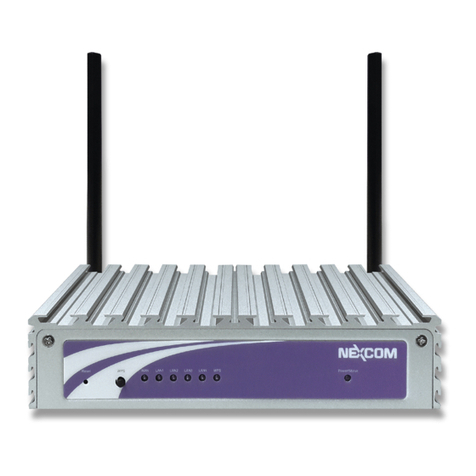
User’s Manual
Light Industrial AP ENGLISH
4
Copyright © NEXCOM, INC.
Table of Contents
1. Before You Start ..................................................................................................................................6
1.1 Preface.................................................................................................................................................6
1.2 Document Conventions....................................................................................................................6
1.3 Package Content................................................................................................................................7
2. System Overview and Getting Started .............................................................................................8
2.1 Introduction of NEXCOM Access Points.......................................................................................8
2.2 Hardware Description......................................................................................................................9
2.3 Hardware Installation....................................................................................................................11
2.4 Access Web Management Interface.............................................................................................12
3. Connect your AP to your Network..................................................................................................15
4. Adding Virtual Access Points ..........................................................................................................21
5. Securing the AP .................................................................................................................................23
6. Creating a WDS Bridge between two APs......................................................................................35
7. Web Management Interface Configuration...................................................................................38
7.1 System...............................................................................................................................................40
7.1.1 General ............................................................................................................................40
7.1.2 Network Interface...........................................................................................................42
7.1.3 Port..................................................................................................................................43
7.1.5 CAPWAP .........................................................................................................................46
7.1.6 IPv6 ................................................................................................................................. 47
7.2 Wireless............................................................................................................................................48
7.2.1 VAP Overview .................................................................................................................48
7.2.2 General ...........................................................................................................................50
7.2.3 VAP Configuration ......................................................................................................... 54
7.2.4 Security........................................................................................................................... 55
7.2.5 Repeater ......................................................................................................................... 59
7.2.6 Advanced ........................................................................................................................60
7.2.7 Access Control ................................................................................................................62
7.3 Firewall.............................................................................................................................................66
7.3.1 Firewall List ....................................................................................................................66
7.3.2 Service ............................................................................................................................70
7.3.3 Advanced .........................................................................................................................71
7.4 Utilities.............................................................................................................................................72
7.4.1 Change Password............................................................................................................ 72
7.4.2 Backup & Restore........................................................................................................... 72
7.4.3 System Upgrade ............................................................................................................. 74




























